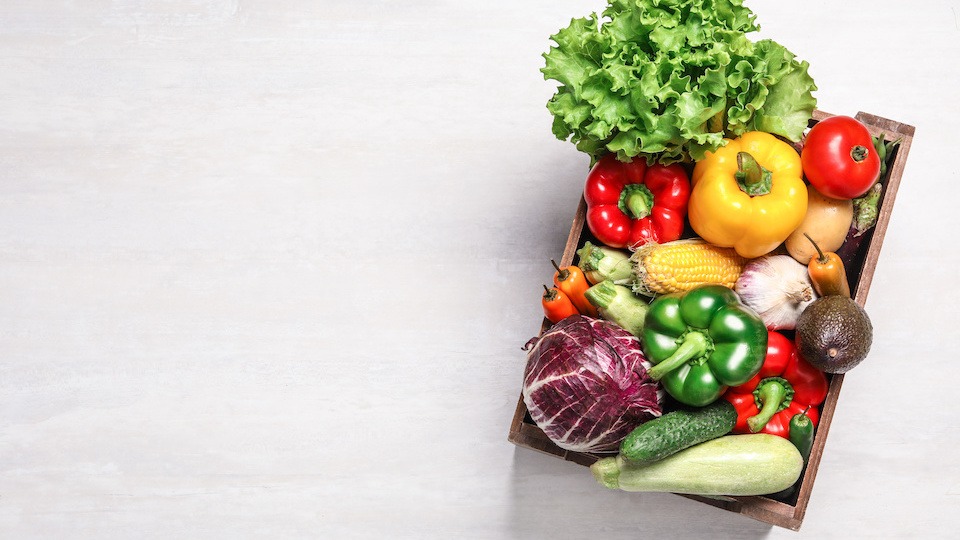The term “plant-based” is becoming so popular that I won’t be surprised if we start seeing it on Oreos and Coca-Cola someday soon. They have no animal derived ingredients, so it’s technically true, and if big food companies can sell more products with a “plant-based” label…they will.
Let’s be clear: A plant-based diet does not mean vegetarian or vegan…and it doesn’t mean meat-free either. Plant-based simply means that the foundation (the “base”) of the diet is built around plants. In other words, the majority of the calories in a plant-based diet come from plant sources rather than animal protein. We’re talking about vegetables, fruit, whole grains, legumes, nuts, seeds, and spices.
Eating plant-based is simple to understand and easy to do. But there can be some confusion because the term “plant-based” has been adopted as a marketing ploy. Companies like Impossible Foods and Beyond Meat are making millions selling meatless patties that are indeed derived from plant sources. Although meat substitutes like these are sold under the “plant-based” banner, these products are heavily processed and far from the whole, minimally processed foods that I advocate.
When I use the term plant-based, I’m referring to real foods, the kind that come from the earth (and the kind that your grandmother would recognize). The kind that are discussed in this article by my UpWellness team…
Enjoy,
-Dr. Josh
Attention meat-eaters…you do not need to become a vegetarian or vegan to eat a plant-based diet! Not all meat is bad; in fact, enjoying lean meats, poultry, or fish can be beneficial in your diet. However, carnivores tend to be incredibly gung-ho about the taste and dietary value of meat and fail to realize the danger of over-indulging in low-quality animal protein at every meal.
The truth is, the right kind of meat should really be used more like a condiment or side. Just a little bit to satisfy and then fill the rest of your plate with plant-based foods that deliver key nutrients. You should, however, make plant-based eating intentional and prioritize real, whole food in your diet…your body will thank you.
Focusing on plant-based eating and reducing intake of conventionally raised and processed beef, poultry, and pork can reduce your risk of the following:
- Heart disease
- Stroke
- Obesity
- High blood pressure
- High cholesterol
- Type 2 diabetes
- Many cancers
Rather than having meat as the star player in your meal, follow these easy steps to include more plants in your diet while still enjoying a moderate amount of healthy meat as well.
How to add more plants to your diet
Start switching out meat for plant-based protein
Of course, protein is important. But just because you are enjoying a plant-based meal doesn’t mean you aren’t getting an adequate amount of this nutrient. In fact, to put things into perspective, the National Academy of Medicine says that the average daily dietary reference intake (DRI) of protein for adults older than 19 ranges from 46 to 56 grams per day. Just a ¼ of ground beef is 23 g of protein, while 1 cup of cooked lentils contains 18 g of protein. Keep in mind how much protein you are eating throughout the day and try swapping out some of your animal-based protein for an equal amount of plant-based protein. Not only will you save money by not buying expensive meat all the time, but you will still get the protein you need plus extra nutrients and fiber, without the many of the downsides of processed meat.
Roast your veggies
Roasting vegetables in the oven gives them a delightful crunch and slightly smoky flavor that can be enhanced by just a little sea salt and pepper. You don’t have to go overboard with exotic flavors or feel trapped cooking vegetables by boiling them within an inch of their lives. Roasting is easy, hands-off, and preserves the flavor and nutritional value of your veggies.
Don’t feel pressure to try something new
While you should have some vegetables at every meal, you don’t have to feel obligated to plan out your weekly menu with a new, intricate vegetable dish every evening. Stick to the simple, practical, and time-efficient ways of preparing veggies that fit into your busy schedule. A side salad, broccoli with lemon pepper, or roasted sweet potatoes are all incredibly easy and can help you reach your daily vegetable quota. Even classic kale chips are a great snack that you can whip up in under 15 minutes.
Don’t be afraid of frozen
Many people are burdened by the common misconception that you have to buy and prepare fresh veggies in order to reap all the nutritional benefits. The truth is, frozen vegetables are equally as nutritious as their fresh counterparts, sometimes even more so because they have not lost quality due to long periods of transit. A two-year study designed to test the nutritional content of fresh and frozen veggies found that there were “no significant differences in assessed vitamin contents” between the two types of vegetables. This is great news for those winter months in most states when fresh produce has to travel hundreds of miles to reach your grocery store. Plus, it is way more convenient since you can keep a stockpile of frozen veggies in your freezer and prepare them without having to worry about chopping, dicing, or slicing anything.
Add nuts and seeds
Nuts and seeds like almonds, sunflower, hemp, flax, walnuts, and chia are some of the healthiest foods you can eat. They provide an excellent source of critical vitamins and nutrients and omega-3 fatty acids. Sprinkle them over yogurt in the morning or eat a handful of nuts as a snack.
-The UpWellness Team









